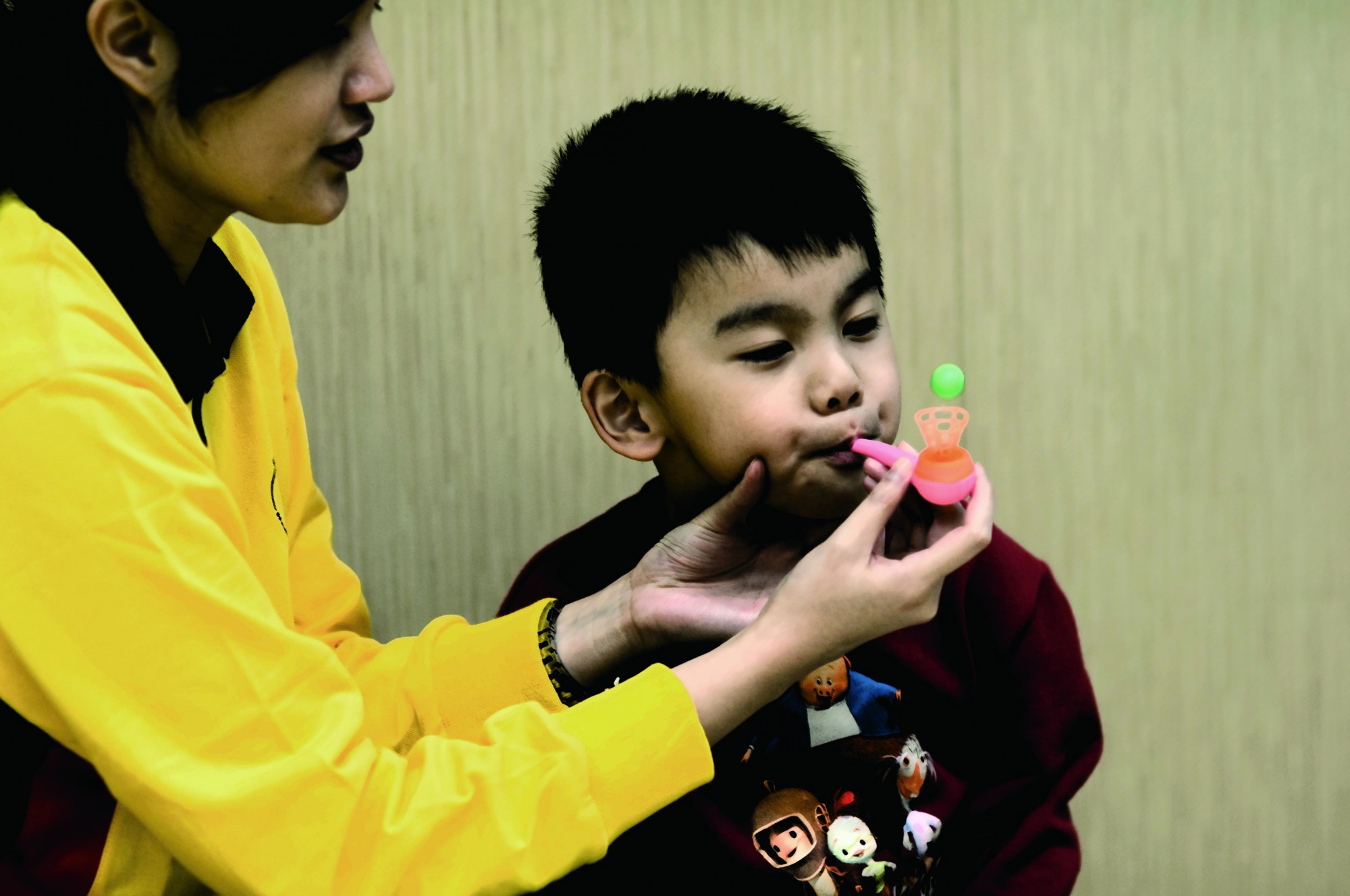Shortage of speech therapists thwarts children’s development
By Joyce Cheng and Katrina Lee
In a colourful classroom filled with toys and picture cards, a woman speaks slowly and clearly to a group of three children sitting around her, ensuring they articulate correctly and rectifying their pronunciation.
For most people, speaking is such a natural activity, they take it for granted and may not realise there are people around them, including children, suffering from communication disorder.
In recent years, families have become more aware of speech and communication problems, especially when parents find their children having difficulties in attaining certain language abilities expected for their age.
For instance, a three-year-old child should be able to say, “I want to eat apples.” But a child with language delay might keep repeating “apples, apples, apples,” or reverse the sentence structure. They might have trouble expressing themselves in simple sentences.
Communication disorders can affect a child’s learning, development and personality. Children who struggle to speak properly could eventually become less sociable and have lower self-confidence.
Language delay and communication disorders take many forms and have many different causes, some of them are genetic or developmental and some are acquired. They refer to impairments in the ability to receive, send and process sounds, words and visual language systems such as writing.
Children with conditions like autism or dyslexia, and children who lack an appropriate language-learning environment are among those who experience communication disorders.
“Speech disorder isn’t only about talking. For example pronunciation, voice problems, swallowing problems and even stuttering are all included in language problems,” says Jessi Chan, a private speech therapist at McKenzie & Associates Rehabilitation Services.
Speech therapists provide professional assessment and therapy to patients with communication disorders and play an important role in assisting and rectifying the language issues they are experiencing.
All therapeutic sessions are specifically designed for individuals to target their needs. Therapists use a variety of techniques such as training cards with phonetic articulations and pictures, facial massages and jaw, lip and tongue exercises to strengthen the muscles of the mouth. For children, games and toys are also used to facilitate their speaking and enhance their attention in a session that lasts between 30 minutes and one hour.







































